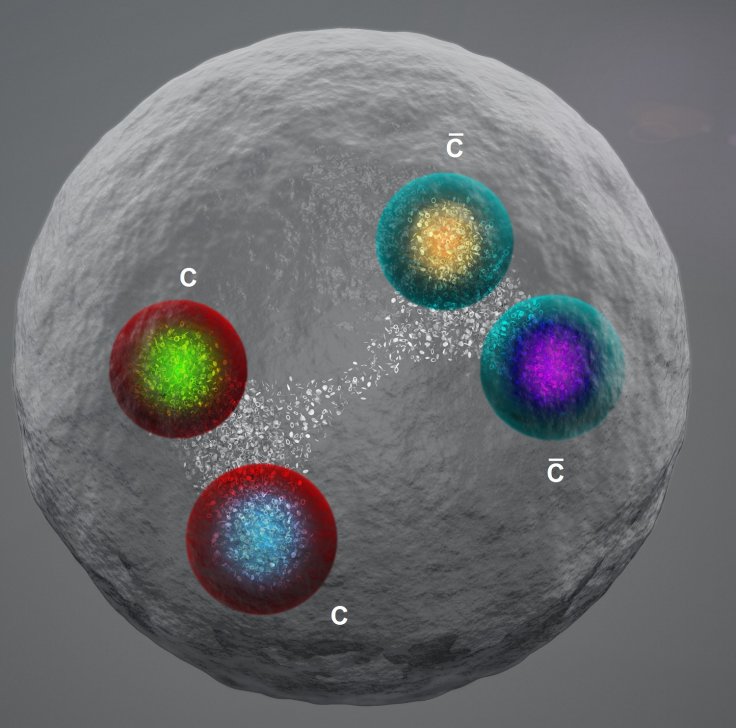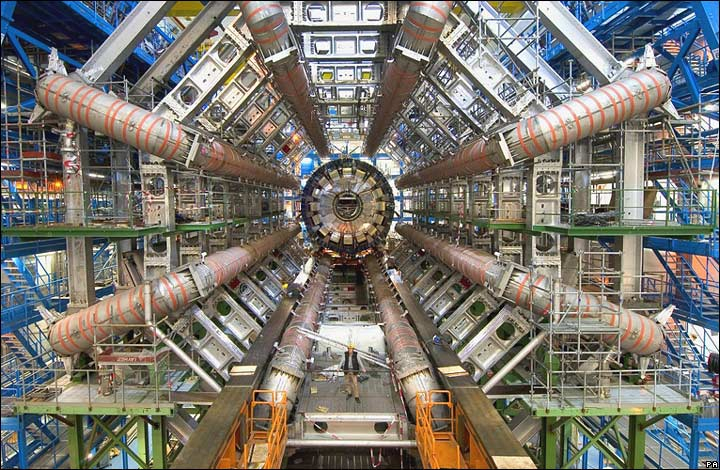The Large Hadron Collider (LHC) has been one of the greatest gifts for particle physics and it has never ceased to amuse scientists. During CERN's (European Organization for Nuclear Research) latest Large Hadron Collider beauty (LHCb) collaboration, physicists discovered a new exotic particle through the atom smasher.
Usually, particles contain two or three quarks but the new particle is made up of four quarks, thus is called tetraquark and is nothing like the other subatomic particles that were discovered previously. Scientists claim that this is the first of its kind that is made up the same class of quarks. The discovery will be of immense help to scientists who want to have a better understanding of the complex ways in which quarks transform into a composite particle.

What Is A Quark?
A quark is an elementary particle which is one of the building blocks of a matter. In general, subatomic particles such as protons and neutrons found inside atomic nuclei contain three quarks which bind themselves together through nuclear force to make up a matter like humans.
It was only in 2017 that the existence of tetraquarks was acknowledged. This type of configuration is rare while pentaquark (five quarks) was discovered only last year. The existence of a six-quark particle is also possible as per scientists.
"Particles made up of four quarks are already exotic, and the one we have just discovered is the first to be made up of four heavy quarks of the same type, specifically two charm quarks and two charm anti-quarks," said Giovanni Passaleva, the spokesperson of the LHCb collaboration.
What makes the new discovery more interesting is that up until now, tetraquarks with "two heavy quarks at most and none with more than two quarks of the same type". The research paper of the new discovery is, however, pending peer review but it further supports the existence of exotic particles.
How Was it Discovered?
The hunt for the exotic particles is a long process. Particularly, in this discovery, scientists combed through the collision data of the LHC's two runs from 2009-2013 and 2015-2018 which had significant upgrades.
In the new technique, excess collision events of "bumps" were considered. The scientists found the excess in the pair of J/ψ meson particle which contains two quarks — one charm quark and a charm antiquark.

All the mesons are hadronic subatomic particles that contain a quark and an anti-quark. They are unstable in nature and decay rather quickly — in less than one zeptosecond (10−21 second). Hence, it is difficult to detect. But scientists found a way to deal with that. Mesons decay into muon particles (another elementary particle with a negative electric charge) and researchers used those to discover the tetraquark.
How Is It Going to Help?
The discovery opens up a new chapter in particle physics. Until now, scientists only observed two heavy quarks and none with more than two quarks of similar type. So, it will allow them to study matter particles in extreme case scenarios. It will also help them test models of quantum chromodynamics which is a theory of strong interaction between quarks and gluons — elementary particles that make up proton, neutron and pion.
"These exotic heavy particles provide extreme and yet theoretically fairly simple cases with which to test models that can then be used to explain the nature of ordinary matter particles, like protons or neutrons. It is therefore very exciting to see them appear in collisions at the LHC for the first time," said the LHCb spokesperson, Chris Parkes of the University of Manchester.
However, like previous other tetraquark discoveries, it is still not clear whether the new particle is a true tetraquark. In a proper tetraquark, four quarks tightly bound together or two quark particles weakly bound in a molecule-like structure. Further studies will be conducted on the subject.









